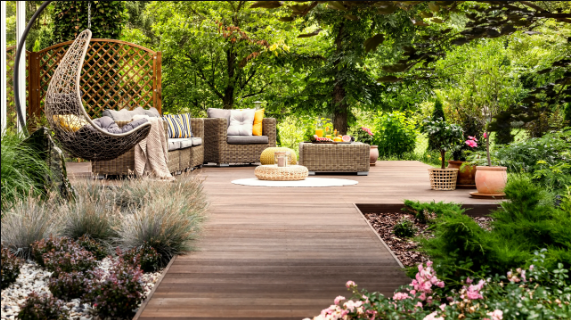Outdoor landscaping is more than just planting a few flowers and calling it a day. It’s an art and science that transforms your outdoor space into a serene, functional, and visually appealing area. Whether you’re looking to create a cozy backyard retreat, a vibrant garden full of life, or a sophisticated outdoor living area, the right landscaping ideas can elevate your home’s aesthetic and increase its value. In this comprehensive guide, we’ll explore essential tips, innovative ideas, and practical advice to help you master the art of outdoor landscaping.
The Essence of Outdoor Landscaping
Outdoor landscaping is a powerful tool that can transform the very essence of your home’s outdoor spaces. It’s not just about aesthetics; it’s about creating environments that reflect your personal style, cater to your lifestyle needs, and connect you with nature. A well-designed landscape can serve as an extension of your home, providing additional spaces for relaxation, entertainment, and even cultivation. Whether you’re dreaming of a lush garden, a sleek patio, or a functional outdoor kitchen, landscaping offers endless possibilities to enhance your quality of life and the value of your property.
Planning Your Landscape Design
The journey to a beautiful outdoor space begins with careful planning. Start by assessing your space, considering factors like sunlight, soil type, and existing structures. Choosing a theme can help unify your landscape, whether you’re drawn to a Japanese zen garden, a rustic cottage garden, or a minimalist modern design. A well-thought-out plan not only ensures a cohesive aesthetic but also maximizes functionality, allowing you to make the most of your outdoor living areas.
Selecting the Right Plants
Choosing the right plants is crucial for a thriving landscape. Consider plant hardiness and how well they’ll adapt to your local climate. Aim for a mix of trees, shrubs, perennials, and annuals to create interest throughout the year. Incorporating native plants can reduce maintenance and attract local wildlife, adding a dynamic element to your garden.
Hardscaping Essentials
Hardscaping—the use of non-living elements like stone, wood, and metal—plays a vital role in landscape design. Paths and walkways guide movement through your space, while patios and decks provide sturdy areas for outdoor living. These elements should blend harmoniously with the natural landscape, enhancing its beauty rather than overshadowing it.
Water Features and Their Benefits
Water features, from serene ponds to bubbling fountains, add a sense of tranquility and movement to your landscape. They’re not just visually appealing; they also attract wildlife and can be used to practice sustainable water management through rainwater harvesting and recirculation systems.
Lighting Up Your Landscape
The right lighting can transform your landscape, enhancing safety and creating ambiance. Strategic placement can highlight architectural features or specimen plants, extending the usability of your outdoor spaces well into the night.
Maintaining Your Outdoor Space
Regular maintenance ensures your landscape remains beautiful and functional year-round. Seasonal care tips, such as pruning, mulching, and overseeding, keep plants healthy, while effective management of weeds and pests protects your investment.
Eco-Friendly Landscaping Techniques
Adopting eco-friendly landscaping techniques is not only good for the planet but can also save you time and money. Practices like water conservation, composting, and the use of native plants can create a sustainable and low-maintenance landscape that thrives naturally.
Outdoor Living Spaces and Entertainment Areas
Creating outdoor living spaces that are both comfortable and functional can significantly enhance your lifestyle. Consider how you want to use your outdoor area—whether for dining, lounging, or entertaining—and design accordingly, incorporating features like fire pits, outdoor kitchens, and comfortable seating.
The Future of Outdoor Landscaping
As technology and sustainability become increasingly important, the future of outdoor landscaping is poised for exciting developments. Innovations like smart irrigation systems and eco-friendly materials, along with a growing emphasis on biodiversity and natural landscaping, are shaping the landscapes of tomorrow.
Conclusion
Outdoor landscaping offers a unique opportunity to enhance your living space, connect with nature, and express your personal style. By carefully planning your design, selecting the right plants and materials, and incorporating sustainable practices, you can create an outdoor space that is beautiful, functional, and environmentally friendly. Whether you’re a seasoned gardener or a landscaping novice, the journey to a transformed outdoor space is well within your reach.

